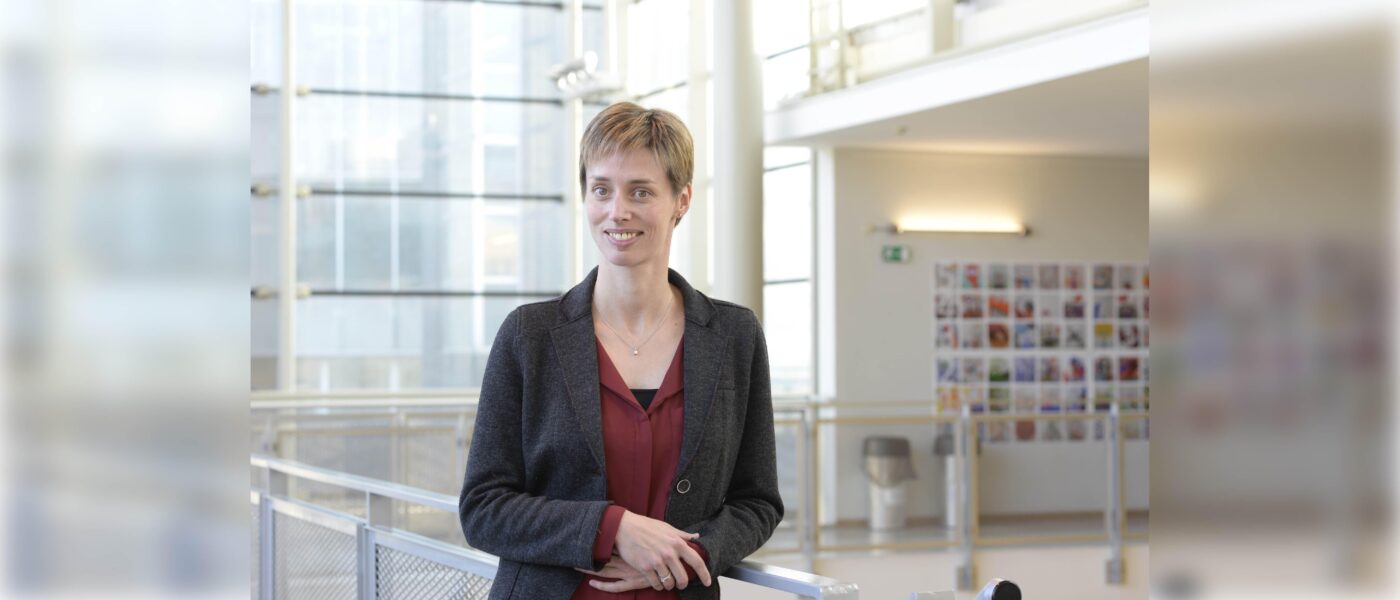OPINION: ‘Photonics can help provide a solution for today’s major challenges’

In an opinion article for the Belgian news magazine ‘Knack’, B-PHOT Professor Nathalie Vermeulen reflects on the importance of light technology and the opportunities it provides. Read the English translation of the original article below.
Photonics is the science and technology of light. This may sound futuristic and yet, it is already embedded everywhere in our daily lives. For example, many homes have been fitted with LED lighting in recent years. This ‘Light Emitting Diode’ lighting is much more energy efficient than traditional incandescent and halogen lighting and it’s an example of photonics technology that we use on a daily basis. Another example are the tiny cameras in our smartphones, which contain very compact lenses to capture light from the environment and project it on a sensor to take sharp pictures and videos. Also in the omnipresent high-resolution flat panel displays you can find the technology of photonics. It can even be found on our roofs, in the form of solar panels that are mainly made up of silicon solar cells. When sunlight hits it, the solar cell converts the energy into an electrical current. Even our primary needs such as food supplies benefit from photonics technology. For example, did you know that green frogs in spinach and yellow worms in corn can be detected and removed by scanning the food with laser light before it is packaged?
It is surprising how many light technology applications are present in our daily lives nowadays. Photonics is a very broad research and innovation domain that revolves around manipulating, capturing, transporting and generating light in order to transmit data, create images, generate energy, and create many other functionalities.
Yet, the term ‘photonics’ is not nearly as well known as ‘electronics’. We all know that our computer contains an electronic chip, a chip that works with electrons or charge carriers. If you connect another device to your computer, such as an external hard drive, electrons are exchanged via a copper wire between the computer and the hard drive. Electrons are therefore central to electronics. In photonics, however, light particles or photons play the main role, hence the name ‘photonics’.
The foundations of photonics were laid in the 20th century, more precisely around 1960 when the first laser was demonstrated by the American engineer Theodore Maiman. The theoretical working principle of the laser was in fact devised many decades earlier by the German physicist Albert Einstein, but the real breakthrough only came with the actual demonstration of laser light in 1960. It signalled the start of several crucial technological developments, ranging from CDs and DVDs to medical imaging techniques and even the internet. It goes without saying that internet traffic has increased dramatically in recent years. The transmitted data also travel greater distances, since we can communicate with each other, download files and stream videos anywhere in the world.
How to regulate this dense internet traffic over those great distances? To send all these data around the world, we use light signals, and more specifically laser light. Copper cables are not suited for the transport of light signals, but fiber optic cables are. An optical fiber is a thin thread of pure glass that, when light is sent into it, captures the light inside and does not let it leak out. In this way, fiber optic cables indeed allow the transport of light signals from one place to another. Due to the extremely high purity of the glass used, the signals experience almost no losses in the glass fiber, making long-distance transmission a reality today.
Many thousands of kilometres of fiber optic cable have already been rolled out all over the world, even at the bottom of the ocean, to transmit data in the form of laser light at data rates of hundreds of Gigabits to even Terabits per second. However, if that fiber optic cable is only extended into the city centres, the light signals arriving there have to be converted into electrical signals, which in turn are distributed over the many electrical copper cables connecting the individual homes. In this way, only a low data rate remains for each user. Fortunately, we can solve this problem with the ‘fiber to the home’ action plan. This means that in the coming years at least 2 million Belgian houses should be equipped with a fast fiber optic connection instead of an electrical internet cable. Photonics technology will then enable us to enjoy faster internet at home.
Finally, photonics can help provide a solution for the major global challenges we are now facing, such as the corona epidemic or climate change. Just look at the thermographic cameras installed at airports to detect corona-infected passengers with elevated body temperature. Or think of the enormous energy savings that both LED lighting and solar panels have already made possible on a global scale, strongly reducing CO2 emissions. In short, photonics has already greatly improved our quality of life at different levels and will continue to do so in the future. With photonics, there is indeed light at the end of the tunnel.

